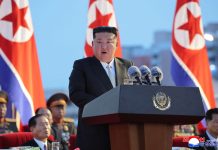India, Nepal tensions appear to have been averted after Nepal PM KP Sharma Oli’ government was forced to delay its plan to move the constitutional amendment in parliament to update the map after the Nepali Congress sought time for more discussion.
Aksai Chin Is No Doklam; Indian Army Will Pay ‘Heavy Price’ For Aggravating Border Dispute – Experts
Until Wednesday morning, an amendment to the constitution was one of the “probable agendas.” But when the House meeting began, the constitution amendment proposal had disappeared from the agenda, writes the Kathmandu Post.
Leaders from the ruling party as well as officials at the Parliament Secretariat confirmed that that the agenda was withdrawn at the request of opposition Nepali Congress, as it sought some more time to discuss the amendment at its Central Working Committee meeting.
“It was removed as per the Speaker’s decision. We were told that the primary opposition Nepali Congress had requested,” a senior official at the parliament secretariat told Post on condition of anonymity as he was not allowed to speak to the media.
China Jostling For Power & Influence In Myanmar – Another Country That Neighbors India
A Nepali Congress leader told Kathmandu Post that during an all-party meeting, Subas Chandra Nembang, deputy parliamentary party leader of the Nepal Communist Party had informed Congress President Sher Bahadur Deuba that the constitution amendment proposal would not be tabled on Wednesday.
“So we were convinced that the government will not table the proposal,” said the leader. “The amendment proposal was listed on the daily agenda only to be removed later.”
There were also reports that Indian back-channel diplomacy had worked to address the growing concerns of Kathmandu which erupted when India inaugurated an 80-km road to Lipulekh. Nepal, which claims Lipulekh, opposed the opening of the road, but New Delhi asserted it was “completely within the territory of India”.
How China Has Used COVID-19 To Escalate Military Conflicts & Crush ‘Democratic’ Voices?
Earlier, as EurAsian Times reported, Nepal had approved a new political map showing the disputed regions of Lipulekh, Kalapani and Limpiyadhura under its territory.
The Nepal cabinet headed had approved a fresh political map which depicts Limpiyadhura, Lipulekh and Kalapani as a part of its territory.
Nepal’s Minister of Foreign Affairs, Pradeep Gyawali tweeted in Nepali informing the decision made by Nepal’s Council of Ministers to publish the map of Nepal in 7 provinces, 77 districts and 753 local level administrative divisions including Limpiyadhura, Lipulekh and Kalapani.
Aksai Chin Is No Doklam; Indian Army Will Pay ‘Heavy Price’ For Aggravating Border Dispute – Experts
The Nepal Ministry of Foreign Affairs brought out a sharp objection, and mentioned that “In light of this development (the road), the Government of Nepal called upon the Government of India to refrain from carrying out any activity inside the territory of Nepal.”
The ruling party of Nepal has also put forward a special resolution in the country’s Parliament that demands the return of Kalapani, Limpiyadhura and Lipulekh from India.
According to experts in Nepal, the map is based on the 1816 Treaty of Sugauli signed between Nepal and British India, according to which the Mahakali River marks the boundary between Nepal and India—east of the river is Nepal and west is India.
After The South China Sea, China Now Looks To Claim The Whole Of Antarctica
“Nepali politicians have long said that historical evidence shows that the disputed territories are within Nepal’s borders, but successive governments have failed to hold talks in earnest with India regarding the lands. Statements are issued only when India makes a move and public anger erupts,” reports the daily newspaper.




